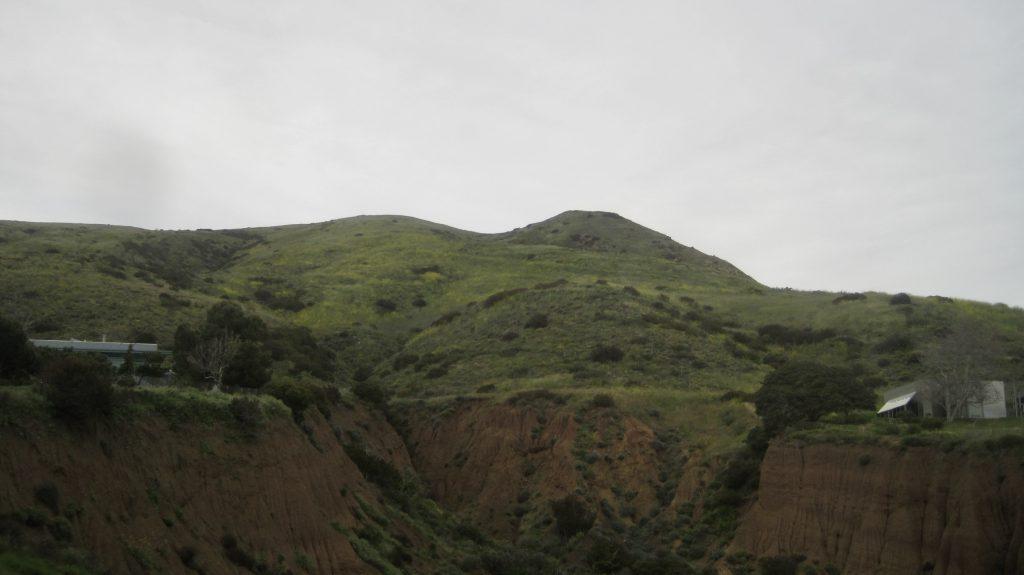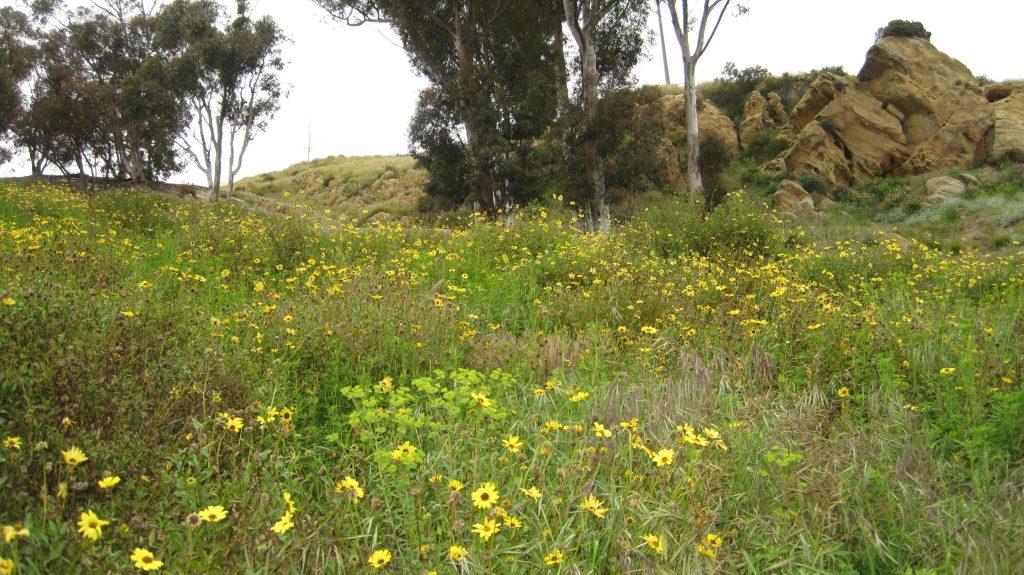Yellow wildflowers bloom along Seaver Drive on April 13. After heavy rain this year in Malibu, the city’s hills were covered in wildflowers.
Rainy day after rainy day has characterized Malibu this year, Amy Rocha, manager of communications with the West Basin Municipal Water District. The onslaught of rain is bringing L.A. County out of its drought, Rocha said.
Despite the unusual amount of rain this year, the wider Southwest U.S. is still in a multi-decade drought, wrote Steven Frasher, public information officer with L.A. County Public Works, in an April 4 email to the Graphic.
“One good season of rain does not undo years of prolonged and extreme drought,” Frasher wrote.
David Sweet, a meteorologist with the National Weather Service in Ojai, California, said this year has been a particularly wet year in L.A. County.
Last year, rainfall in the county reached 12.7 inches, Frasher wrote. So far this year, 27.7 inches of rain have fallen.
Sweet said the recent rainfall in L.A. County has come from the Gulf of Alaska where strong and cold troughs — elongated areas of low atmospheric pressure, according to the National Weather Service — have moved ashore to California.
Atmospheric rivers also caused some of the heavy moisture in California this year, Sweet said. He said atmospheric rivers are plumes of moisture that come from the tropics.
“A lot of that moisture is drawn into these cold, powerful storms,” Sweet said.
Historically, atmospheric rivers cause most of California’s rain, Sweet said. There have been between 10 and 20 atmospheric rivers in California this year. On average, California has about five or six atmospheric rivers, according to the California Department of Water Resources.
“With so many of these atmospheric rivers in one season, it led to what can certainly be considered a rather rare occurrence,” Sweet said.
As California’s drought decreases in severity, Governor Gavin Newsom decreased restrictions to water access after this rainy season, according to the Office of Governor Gavin Newsom website. Newsom ended the voluntary 15% water conservation target and the requirement that local water agencies enact the second level of their drought contingency plans.

Newsom stated in a press conference California is not completely out of the drought, wrote Kiley Russell, reporter for The Almanac.
Twenty-one counties in California are still in a drought, according to the U.S. Drought Monitor. The counties’ drought conditions range from abnormally dry levels to severe drought.
Rocha said the West Basin Municipal Water District, which covers West Los Angeles — Malibu, Topanga, Marina del Rey, El Segundo, Manhattan Beach and more — is at risk of falling back into drought based on the conditions of one of its water supplies: the Colorado River.
Half of the WBMWD water supply comes from the Sierra Nevada, Rocha said. The other half is from the Colorado River, which is in a drought.
“Currently, Colorado River supplies are at near critical levels,” Frasher wrote.
The state of the Colorado River and California’s constant variability in precipitation could put L.A. County back in drought conditions rapidly, Rocha said.
“Just as quickly as the drought flipped this year, it can flip back just as quickly,” Frasher wrote.
Frasher wrote L.A. County residents should continue to conserve water as if the county is still in a drought.
“We are still encouraging conservation as a way of life, which helps ensure our water supplies are safe, resilient and sustainable,” Frasher wrote.
Residents can employ strategies such as taking five minute showers, turning off the tap while brushing their teeth or scrubbing dishes, washing full loads of laundry and full loads of dishes instead of half loads, and filling the bathtub only halfway to conserve water, according to the L.A. County Public Works.
___________________
Follow the Graphic on Twitter: @PeppGraphic
Contact Millie Auchard via Instagram @millieauchard or email: melissa.auchard@pepperdine.edu

